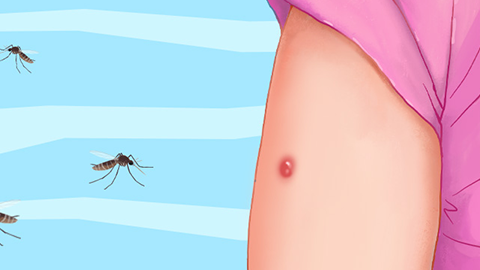What to do if stung by a wasp
Generally, when stung by a wasp, the following treatments are recommended: removing the stinger, cleaning the wound, applying cold compresses, medication, and seeking medical treatment. It is advisable to go to the hospital promptly for examination and follow the doctor's instructions for appropriate treatment. Detailed measures are as follows:

1. Remove the stinger
After a wasp sting, its stinger usually remains embedded in the skin and should be removed as soon as possible. Patients should follow medical advice and gently scrape off the stinger using tools such as fingernails or tweezers. Avoid squeezing the sting site with fingers, as this may cause more venom to be released.
2. Clean the wound
Wasp venom is alkaline; therefore, acidic liquids can be used to neutralize the venom and reduce skin irritation and damage. Continuously rinse the wound with running water or wipe the affected area with acidic substances such as vinegar, white vinegar, or lemon juice.
3. Apply cold compresses
Patients can apply a cold compress to the affected area by wrapping ice in a towel, which helps reduce capillary dilation and blood flow, thereby alleviating symptoms such as pain and swelling. Each cold compress session typically lasts 15–20 minutes and can be repeated multiple times.
4. Medication
If the pain is severe or an allergic reaction occurs, seek medical attention promptly and follow the doctor's instructions for medication. Antiallergic drugs such as Cetirizine Hydrochloride Capsules or Desloratadine Oral Solution can help alleviate allergic reactions. Antibiotics such as Penicillin V Potassium Tablets or Cefixime Granules may be used to prevent or treat infections.
5. Seek medical treatment
If symptoms continue to worsen or if a severe allergic reaction occurs, immediate medical attention should be sought for emergency treatment. Doctors may administer intravenous fluids, such as Prednisolone Acetate Injection, Dexamethasone Sodium Phosphate Injection, or Glucose Injection, depending on the patient's condition.
Remain calm during treatment and follow medical advice. Additionally, keep the wound clean, change the dressing regularly, and avoid secondary infection.





